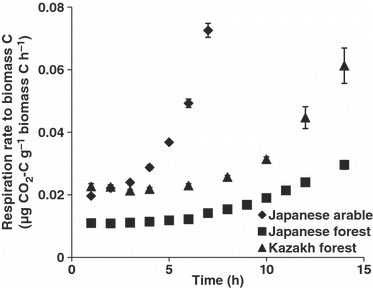Figures & data
Table 1 Physicochemical and microbial properties of the soils
Figure 1 Respiration rates as a function of time after the addition of various concentrations of glucose for Japanese arable (a,b) and forest (c, d) soils. The numbers in the key show the concentrations of added glucose (μg C g−1 soil). Error bars indicate standard errors (n = 3).
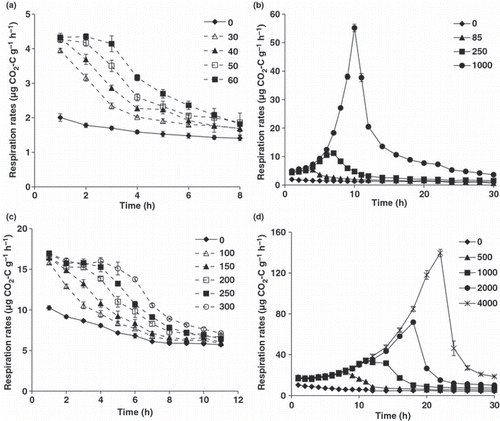
Figure 2 K2SO4-extractable C as a function of time after the addition of various concentrations of glucose for Japanese arable (a) and forest (b,c) soils. The numbers in the key show the concentrations of added glucose (μg C g−1 soil). Error bars indicate standard errors (n = 3). Significant differences between extractable-C with and without the addition of glucose at *P = 0.05.
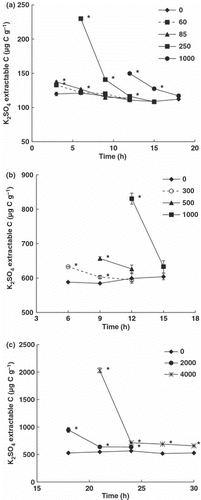
Table 2 Respiration profiles, time taken until all glucose was utilized (h) and the ratio of extra C respired to utilized glucose C (%) after the addition of various concentrations of glucose to the Japanese arable and forest soils
Figure 3 Chloroform-labile C (♦) and substrate-induced respiration rates (▀) plotted against the concentrations of added glucose at 6 and 12 h after the addition of various concentrations of glucose for Japanese arable (a) and forest (b) soils, respectively. Error bars indicate standard errors (n = 3). Significant differences between chloroform-labile C or substrate-induced respiration rates with and without the addition of glucose at *P = 0.05. G, growth-associated respiration type; Z, zero-order respiration type.
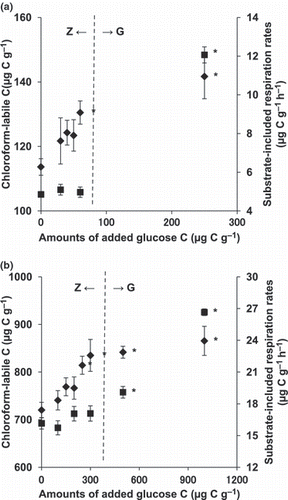
Figure 4 Ratio of respired to utilized glucose C plotted on a logarithmic scale of the concentrations of added glucose C to biomass C (%). Error bars indicate standard errors (n = 3). Data for the Kazakh soil are from Sawada et al. (2008).
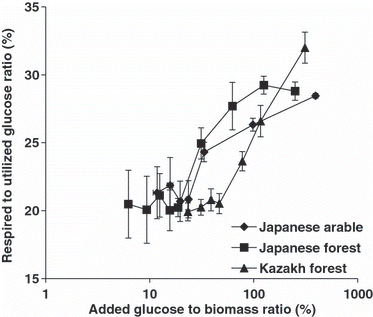
Figure 5 Respiration rates divided by biomass C as a function of time after the addition of the highest concentrations of glucose. Error bars indicate standard errors (n = 3). Data for the Kazakh soil were obtained by recalculating the respiration rate after the addition of the highest concentration of glucose in in Sawada et al. (2008).
